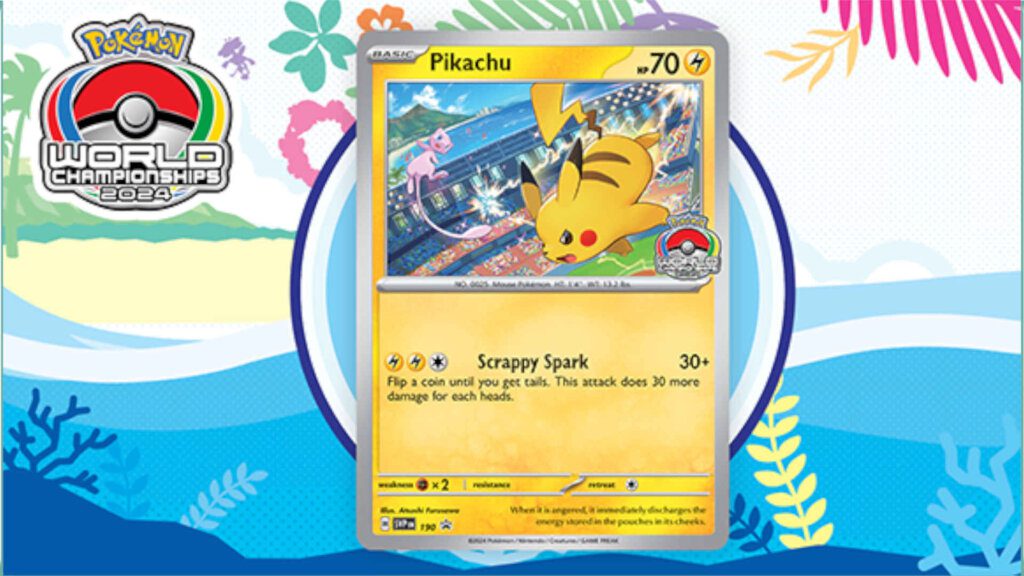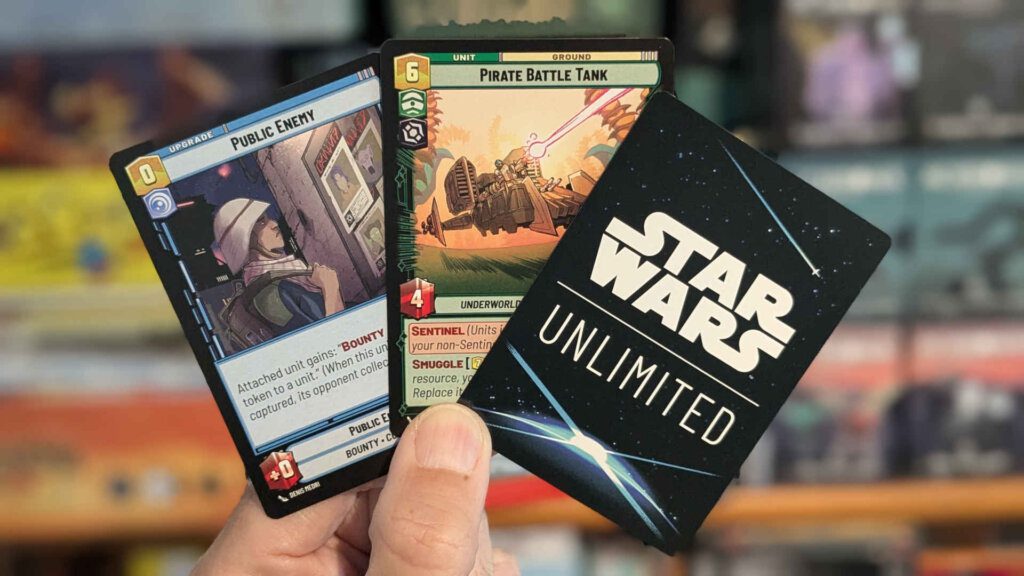Despite being a big part of the British pop culture landscape since 1963, Doctor Who was in a very strange place in 1996.
First things first, however; what is Doctor Who, exactly?
Table of Contents
ToggleA Brief History Of Doctor Who
Doctor Who chronicles the adventures of a rogue Time Lord from the planet Gallifrey, who travels through space and time in a spaceship, disguised as a mid-20th century Police Box: the TARDIS (that’s Time And Relative Dimension In Space).
In the TARDIS, the Doctor travels through space and time, protecting and saving the universe, while accompanied by a succession of companions (or, as they’re sometimes known, assistants), from a huge variety of alien and Earthbound threats.
One of the masterstrokes of the series is the fact that, when mortally wounded, the Doctor regenerates into a new form; initially brought about by necessity due to the failing health of the show’s star, William Hartnell, it’s allowed for the series itself to undergo numerous reinventions (or regenerations!) of its own, and continue to update and revitalise itself for successive generations of fans to enjoy.
Yet by the late 80s, the TV series had, for its last few seasons, had a turbulent run, with behind the scenes meddling and a lack of faith from executives at the BBC that saw budgets reduced, gaps in filming and transmission and, finally, outright cancellation (though it was never officially referred to as such) in 1989.
With the show already being 26 years old at that point, it had a dedicated and loyal fanbase, who refused to let Doctor Who die; the Time Lord’s story continued outside of TV, with a massively popular range of novels, published by Virgin, running throughout the decade from 1991 onwards.
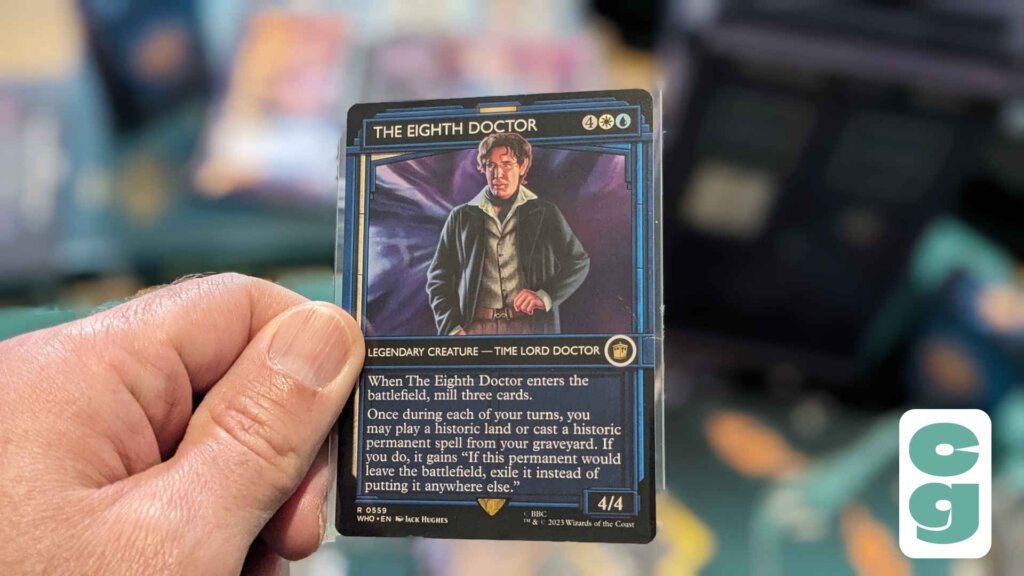
The show was revived very briefly, with a 1996 TV movie starring Paul McGann as the Eighth Doctor (shown above as featured in Magic: The Gathering, as he didn’t exist when the Doctor Who CCG was produced!) and Sylvester McCoy’s Seventh Doctor, last seen at the climax of the TV show in 1989, appearing before renegerating into McGann.
Sadly, it wasn’t to last; though this was intended as the pilot for a new era of the show, it was seen as a flop outside of the UK and thus, didn’t continue. It wouldn’t be until 2005 that Doctor Who truly returned to screens, and it’s been there, short breaks aside, ever since.
Doctor Who In The 90s: TV, Tabletop And Beyond
Going back to the mid-90s, however, it wasn’t just in books that the Doctor Who mythology was kept alive. Comics, audio dramas and even tabletop games kept the nemesis of the Daleks alive for fans, and it’s one of those tabletop games that I’ll be checking out here.
With the TV movie imminent in 1996, and Doctor Who seemingly headed for an onscreen revival, it was perhaps seen as good timing to release a Doctor Who Collectable Card Game (CCGs); after all, numerous CCGs, licensed and otherwise, had proven to be huge successes, in the wake of the industry changing release of the first ever Collectible Card Game, Magic: The Gathering, in 1993.
For example, both Star Wars and Star Trek had their own CCGs, and were massively popular. Though Doctor Who’s fan base was, at least back then, more niche and more localised to the UK at the time, its hungry fanbase would surely be keen to get their hands on the rich history of their favourite Time Lord, in card game form, right?
Yet the game was not successful, either commercially or critically, and died a swift death, with no expansions released after the initial set.
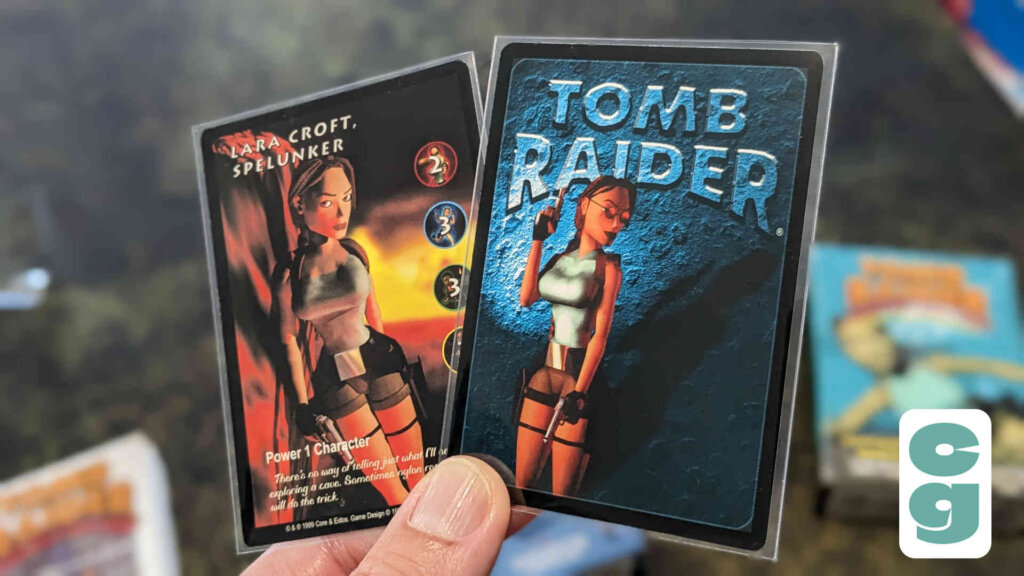

We’ve covered other 90s CCGs that didn’t last very long or meet with much in the way of commercial success, such as Sim City: The Card Game and the Tomb Raider CCG (pictured above); in both of those examples, we found that there were some excellent mechanics and a great game, hidden under some baffling design and rarity distribution decisions that killed interest in each title before they could truly live up to their potential.
Can the same be said for Doctor Who: The Collectable Trading Card Game, which couldn’t even decide whether it wanted to be referred to as a CCG or a TCG (spoiler: they’re pretty much the same thing, but using both terms is immediately and needlessly confusing)? Let’s take a look.
Where To Get Started With Doctor Who: The Collectable Trading Card Game
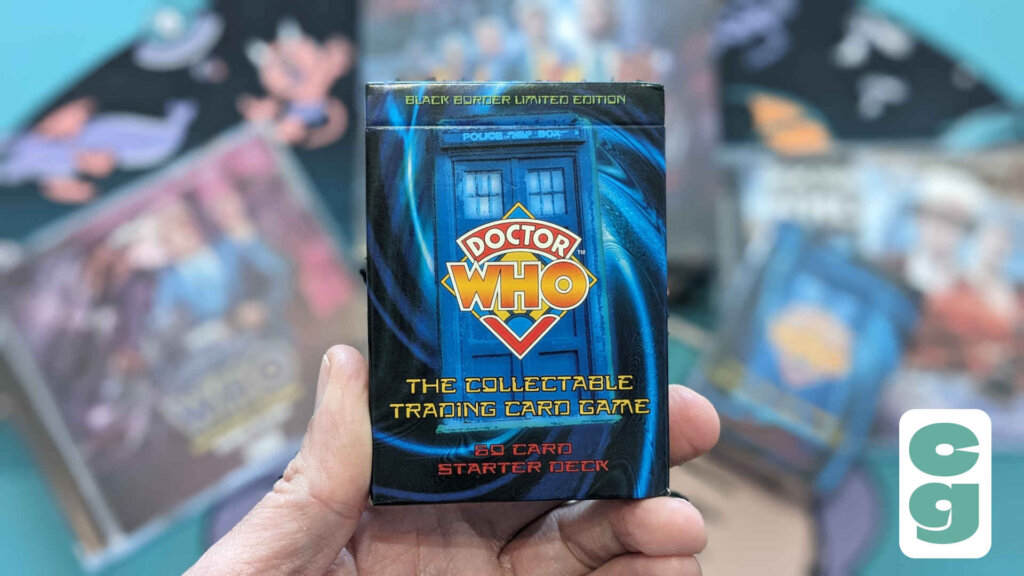

Given that only one set was ever released for the Doctor Who CCG (or should that be CTCG?), it’s actually really straightforward to pick up the sets you need to get playing. The product range consisted of either 60 card Starter Decks or 12 card booster packs; in that sense, the Doctor Who Collectable Card Game is a nice return to basics.
It’s something that Magic: The Gathering has struggled to get back to in recent years, with a bewildering number of booster pack types now being slightly simplified, though there are still lots of other decks and bundles that make it more difficult for newcomers to know where to begin.
In the modern era, the only game we can think of that has successfully hit the market with such a pared down, easy to understand range is Star Wars Unlimited; the only products you can pick up, aside from accessories, are the Two Player Starter set and just one type of booster pack.
In any case, it’s good to know that you can simply pick up a starter set and maybe a few boosters, then get going.
The Problem With Doctor Who CTCG Starter Decks
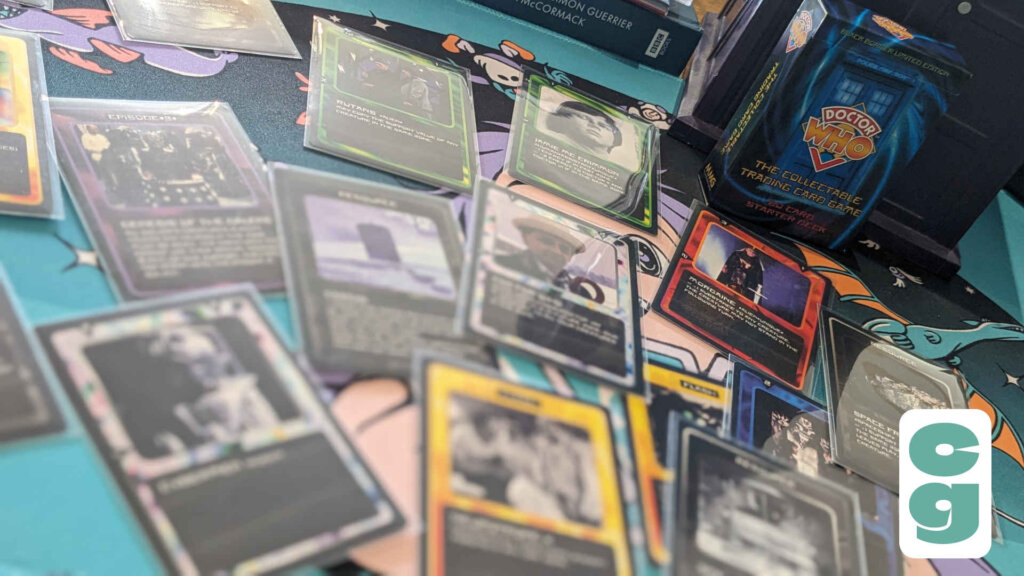

The Doctor Who Starter Decks, however, contain a quirk of the era they’re from, with the pack being a random assortment of 60 cards. This means that you can pick up two starters and find two radically different selections of cards within it, with no guarantee of balance or playability; aside from a small selection of fixed cards that are needed to function as the player’s life and other play area type cards, you could be looking at finding pretty much any character, object, event or setting from what was, even at the time, the 33 year history of the show.
In fact, in the first starter deck I opened, I didn’t have a single Doctor card, despite there being seven different Doctors in the game; all are Rare, except the Fourth Doctor, who’s one of the three Ultra Rare cards in the game. It’s a bit weird getting a starter deck for a Doctor Who game, and not even being able to use the Doctor himself!
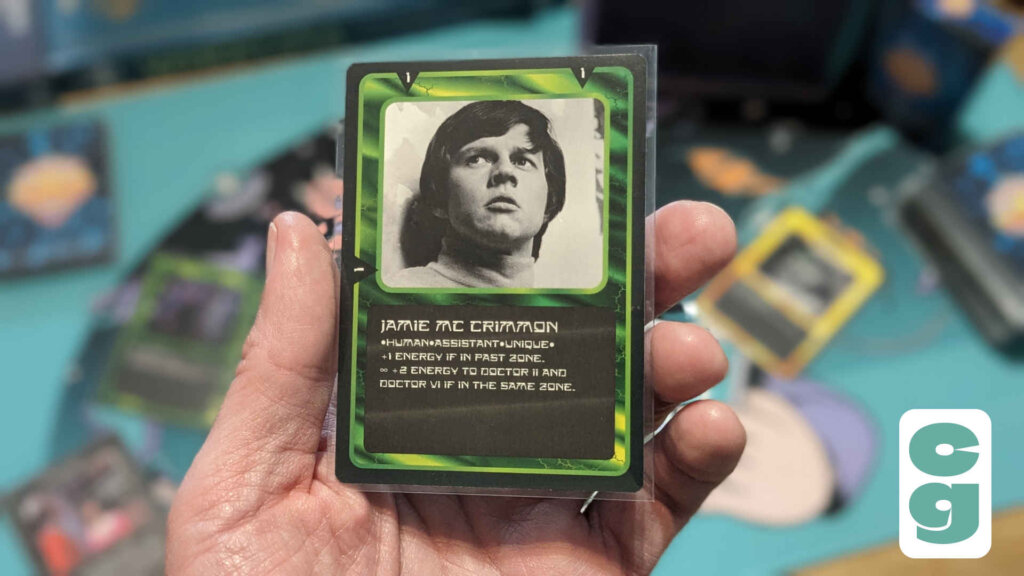

Not only that, but in that same pack, I didn’t get a single one of the Doctor’s many assistants; given that there’s an entire mechanic in the game (with cards known as ‘Episodes’) that can be overcome by using a Doctor and two assistants, this feels like another strike against the completely random nature of the cards in the starter decks.
Oh, have I also mentioned that I didn’t get any Episode cards in that starter deck either?
On the plus side, considering that the cards are random in starter decks, there are very few rules when it comes to deck building, so you’re just about certain to be able to use the cards that you receive in your deck, though of course having a decent selection of cards is far from assured.
As long as you have 9 Time cards (that’s the aforementioned ‘life’ card deck) and three Watcher cards, one for each of the Past, Present and Future Time Zones, which all come as ‘fixed’ cards in the Starter Deck packs, you’ll be good to go.
How To Play Doctor Who: CTCG
It’s fair to say that the rules for the Doctor Who CTCG are, a bit like its title and the Starter Decks themselves, a bit of a mess.
Though this isn’t uncommon when looking at rule books from the 90s (believe us, rules, tutorials, player aids and so on have come a very long way over the last few decades), Doctor Who’s rules really are especially difficult to understand, with, among other issues, a weird and completely unintuitive explanation of the combat mechanic.
However, never let it be said that we’ve ever let even the most complicated or convoluted of rules defeat us, so come with us as we take you through how you play the Doctor Who CTCG.
The Object of the Game
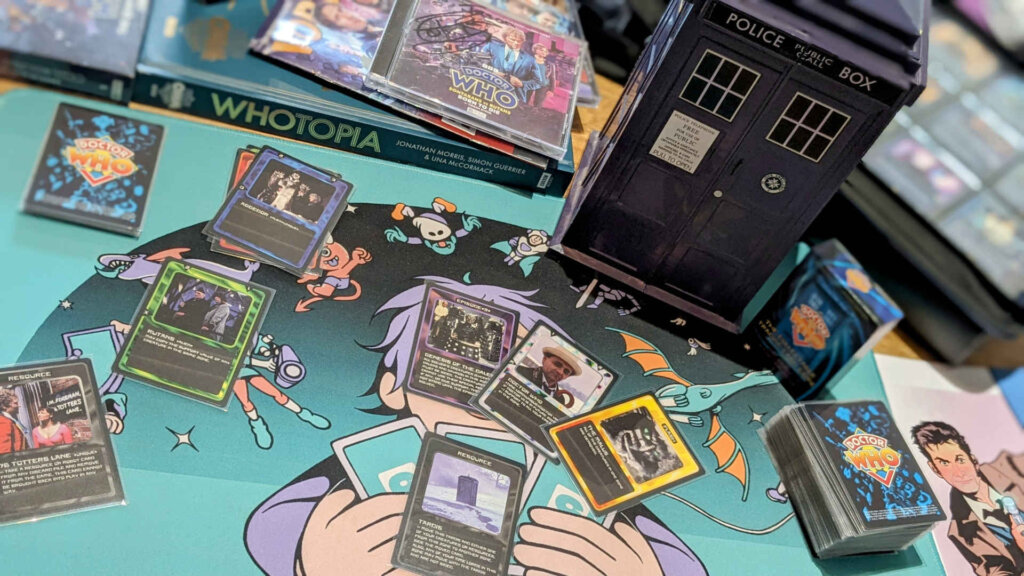

To win a game of the Doctor Who CTCG, you just have to force your opponent to lose all of their Time cards.
This is, admittedly, a really clever touch in a game concerning travellers battling throughout time and space; to win, you have to make your opponent run out of time!
Taking Your Turn In Doctor Who: CTCG


On each turn, players play cards into their Time Zones; each player has a Past, Present and Future Time Zone, which are essentially three different battle areas. Cards have a coloured border that denotes the Time Zone they can be played into: Green for Past, Red for Present, Blue for Future and Grey for Timeless, which can be played in any Zone; examples of each are pictured above.
Each turn, a player declares a Time Zone after readying all of their cards; they can only play cards into the declared zone, as well as this being the only zone that card abilities can be used, and where combat will take place this turn.
The colour of the top, revealed card of the active player’s Time card deck, which, as we’ve mentioned, also doubles as a player’s health, determines which is the current ‘bonus’ Time Zone.
This means that players are able to either play or draw an extra card if they’re using the bonus zone, at the relevant point in their turn. In any case, players may place one Resource or Creature card in the chosen zone, with cards that have a grey frame being ‘Timeless’, and therefore able to be placed in any zone.
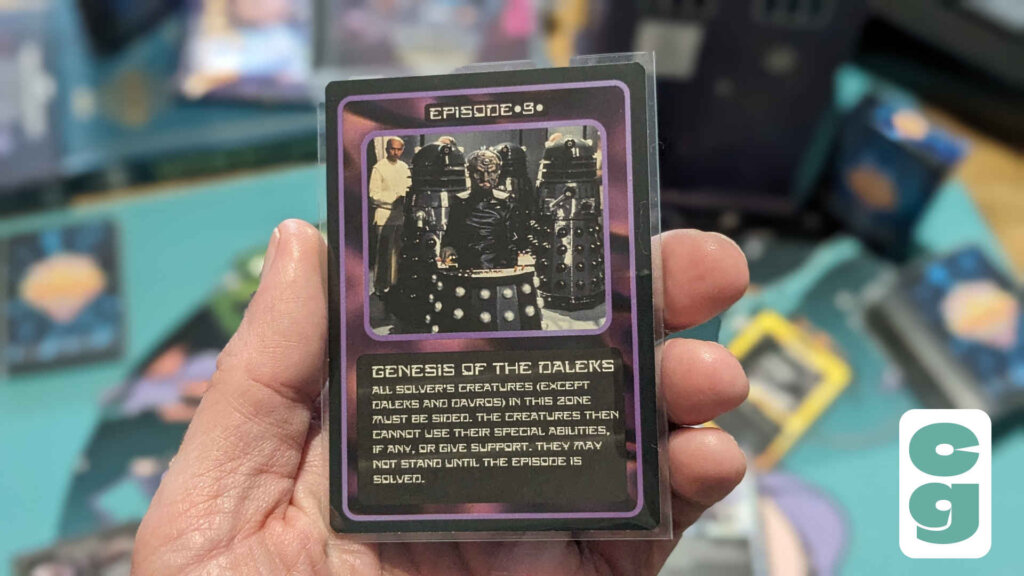

An Episode card can be placed; these can’t be placed until you opponent has played at least one card in each Time Zone, but when able, an Episode card is played on your opponent’s side, giving them a card to ‘solve’ on their turn and slowing them down.
Flash cards, which function like event cards in other games, can be played at any time for special, one off abilities and effects.
Combat In Doctor Who: CTCG
Next up is the combat phase and, as mentioned, for such a vital part of the game, it’s ridiculous just how poorly articulated the combat rules are in the game’s rule book!
The rules state that the active player declares that they will be initiating combat, then the defending player has a chance to ‘prepare their defence’. The rules do not elaborate on what ‘preparing defence’ actually means, nor does it give any further details, or demonstrations, in the near-useless Example Game that follows the main rules.
There are two stats used for combat, Energy and Substance; combat ensues when the attacker chooses their main combatant, as well as a creature on the opposing side for them to take on. The Energy and Substance values of both creatures are compared; here’s where the rules fall completely short, once more.


Instead of explaining in plain English that the Attacker’s Energy (which we’ve circled above in red) and Substance (circled in yellow) values must both be higher than the Defender’s stat values in order to win, it instead chooses to use a table that obfuscates this fact, in a very confusing manner.
To make it much clearer than the rules do: if one combatant’s Energy and Substance values are both higher than the other combatant’s, taking any Support (circled in the above image, in green) values into account from other cards, the loser’s Creature is removed from play.
If there are no Creatures in the opponent’s Time Zone, or they choose not to defend, then 1 Time Card is discarded from the opposing player’s Time Card deck; if the colour matches the previous one, the attacker can make a further hit and force the defender to discard this one too!
At any point, if a player is out of Time cards, they lose the game.
Ending Your Turn
Following combat, a player may draw another card if they used their bonus Time Zone and didn’t play an extra card, then all card values revert to their printed numbers if they changed during the turn.
Play then passes to the next player and the game continues until one player runs out of Time cards.
How Does The Rarity System Work In The Doctor Who CTCG?


The Doctor Who CTCG has a strange rarity structure that isn’t even noted on the cards, and which, at the time, made it difficult to find most of the Doctors and their assistants, unless you were willing to hunt for them in multiple deck packs or boosters.
As you can see from the image above, which shows one Common, one Uncommon and one Rare, there’s no text or visual indication as to what rarity each card is classified as.
Cards such as Tom Baker’s iconic Fourth Doctor, or Davros, the creator of the Daleks, were Ultra Rare and incredibly difficult to find, with rarity being somewhere in the region of 1 Ultra Rare in multiple boxes of boosters; it goes without saying that pretty much locking out these cards, featuring two of the saga’s most popular characters, for most players just seems like a ridiculously poor decision.
Though you might expect to get a complete (or at the very least, playable) experience when you buy a Starter Deck, they’re unbalanced, random assortments of cards that could see you stuck with boring, weak characters and events, in comparison to those that another player may find in the exact same type of pack.
Are The Cards Worth Collecting For A Doctor Who Fan?
Even setting aside the appallingly bad rule book, which goes out of its way to make even the simplest of rules really difficult to grasp, the cards themselves are really badly designed, with an awful, ‘futuristic’ font that can be a chore to read, a lack of clarity with the numbered stats and images that can sometimes be unclear or even fail to match the card title!
Though it was fairly standard at the time to use show or movie imagery in licensed titles, in the Doctor Who CTCG it’s particularly lazily applied, with dark, unclear images or weird, computer generated pictures that don’t even attempt to match the card name.
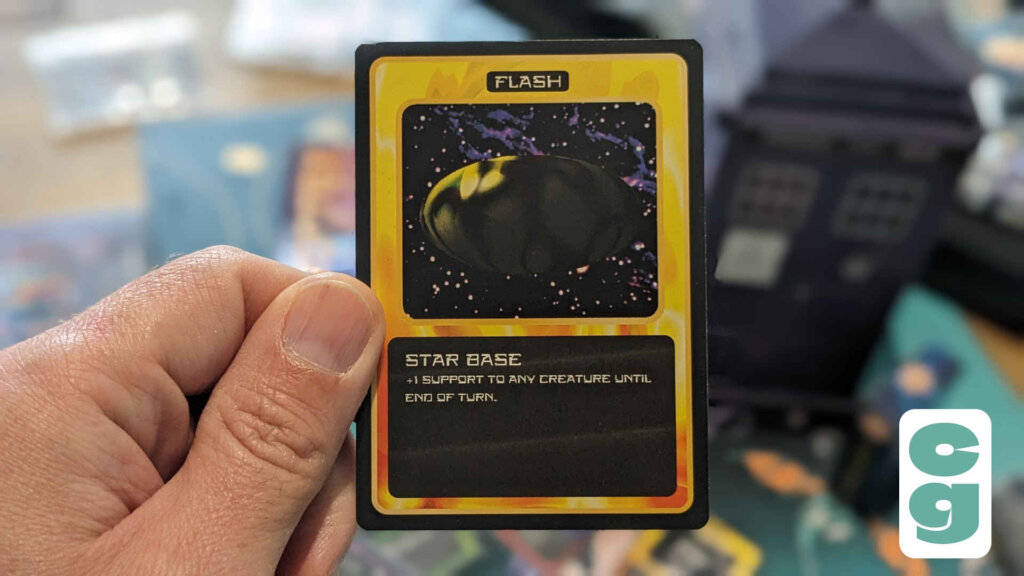

For example, though we can forgive the abstract, early 90s-rave style imagery for concepts such as ‘Time’ cards, why does the Star Base look like a random, abstract computer generated blob and not a ‘Star Base’ at all?


As another direct and more obvious example of this, check out the TARDIS card above; though it appears in just about every episode of Doctor Who, and there must have been hundreds, if not thousands, of stills and frames of footage to choose from to depict the TARDIS card, an image of the time travelling ship shows it in the distance, in a bleak and uninteresting landscape.
Another card, Rutans, doesn’t show the true form of the creatures at all. Shapeshifting, green alien jellyfish, the Rutans can imitate other lifeforms; technically, the card does show a Rutan alongside Tom Baker’s Fourth Doctor (as it’s imitating a Lighthouse Keeper), but given that their actual, alien form is seen in the story, why not show that instead?
To directly answer the question heading up this section, and as you may have gathered from the above details, we can’t even recommend the Doctor Who CTCG for die-hard fans of the classic show who may be keen to collect these cards, rather than play the game.
The Card Gamer Verdict


With all of this in mind, it’s not difficult to see why the Doctor Who CTCG failed so quickly.
Unless you count the much more casual, kid-friendly Battles In Time, which featured a very basic, Top Trumps-esque style of gameplay (a far cry from the depth or strategic nature of most CCGs), there hasn’t been another Doctor Who CCG since the CTCG came and went in 1996, which is a real shame.
Doctor Who’s 60 year saga is rich with potential for a Collectible Card Game, with Magic: The Gathering even creating their own Universes Beyond set that spanned the entire history of the series, but it’s certainly filled with enough characters and settings to sustain its own game.
Unfortunately, this 1996 effort is not one that does justice to the series; it feels like a cheap, poorly thought out cash in that doesn’t even appear to have been playtested or, in the case of the rules, edited for any sort of clarity.
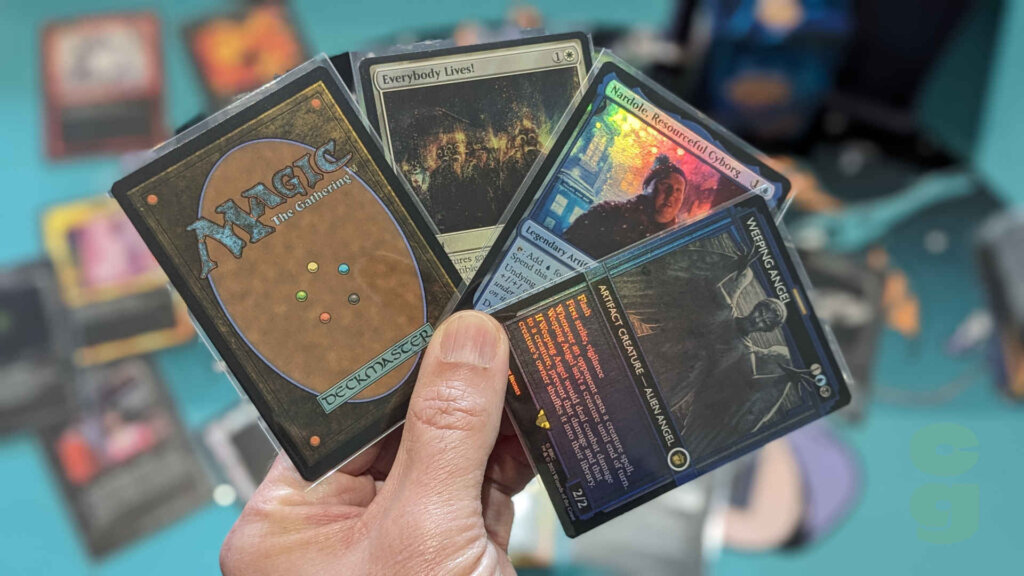

So unfortunately, this is a game that we can’t recommend at all; if you’re a Whovian and want to play a card game featuring the Doctor, we’d urge you to check out the Magic: The Gathering Doctor Who Commander Decks and Collector Boosters, which do a great job of covering every single era of the show, in a way that makes the cards feel highly thematic and satisfying to play, or even just collect.
It may not be an original game, given that it really is just Magic: The Gathering with Doctor Who-themed cards, but it’s light years ahead of the Doctor Who CTCG, which itself is certainly not worth a trip in the TARDIS for.
Usually, our Reshuffle features here at Card Gamer find hidden gems amongst the many long forgotten, out of print titles that litter the history of CCG games. Doctor Who’s awkwardly titled Collectible Trading Card Game isn’t one of them, sadly.
There’s still room for a proper Doctor Who CCG to hit tabletops, especially given that the audience for CCGs has widened significantly over the last few years, but the universe of the Doctor Who CTCG isn’t one that’s worth saving.
This article may contain affiliate links. If you use these links to purchase an item we may earn a commission. Thank you for your support.



